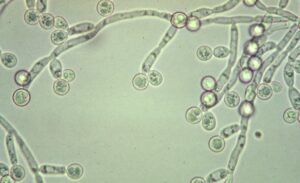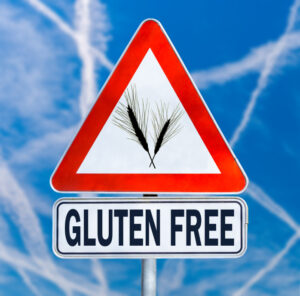Some experts believe that there is a clear connection between fungus and gluten intolerance. This suggestion is confirmed by the numerous cases of people who were diagnosed with Celiac disease or gluten intolerance and who were able to return to eating wheat and gluten products without any negative consequences whatsoever after following a diet aimed at eliminating Candida.
Gluten is a protein that consists of gliadins and glutenins. It acts as an emulsifier, which helps the food to connect. Wheat is a cereal grain that contains gluten, and it is the most commonly consumed cereal, though there are many other types, including bulgur, rye, and all products that contain these cereals foods. Moreover, couscous and malt are made from wheat. A lot of people who are gluten intolerant are also sensitive to oats; although oats do not actually contain gluten, they are comprised of a protein similar to gluten.
How Candida Functions
Many people have the fungus Candida within their systems. Fortunately, healthy bowels contain a great amount of useful bacteria that keep the Candida under control and prevent excessive spreading of this fungus. However, if the balance between the fungus and bacteria is disturbed (because of antibiotics or excessive sugar intake), the Candida begins to  spread and releases harmful toxins as it carries out its metabolic process.
spread and releases harmful toxins as it carries out its metabolic process.
While growing, it changes its shape and transforms from a simple fungus to a shape consisting of filaments or threads that perforate cell tissue. In this way, Candida effectively destroys the coating of the bowel, and it can even pierce the intestinal wall, at which point the proteins and food cells that would be otherwise unable to enter the bloodstream succeed in entering the organism.
In this situation, the body reacts to these substances as if they were pathogens. The process in which Candida enables the release of gluten into the bloodstream explains the ever-rising number of people who are becoming gluten intolerant.
Examining Gluten Intolerance
Additionally, there are a lot of people who are gluten intolerant but were not diagnosed with Celiac disease, which is an autoimmune disease (not an allergy or intolerance). Celiac disease is typically characterized by inflammation or bowel damage upon gluten consumption. In the case of Celiac disease, the organism reacts to gliadin, a wheat protein. Unfortunately, people who suffer from this disease usually spend the rest of their lives avoiding gluten.However, what if the person is not diagnosed with Celiac disease, yet he/she shows clear signs of gluten intolerance?
In this case, we need to turn to Candida Albicans and the protein found in its cell wall, HWP-1, which enables the Candida to attach to the gastrointestinal wall. The body of the HWP-1 does not look any different from the bowel cells,which enables the Candida to remain in the digestive system.
The configurations of the amino acids that make up the HWP-1 protein are very similar to the proteins ? gliadin and ?gliadin, which are found in gluten products. With time, the fungus cells begin to change and stop being fixed as gliadin proteins. They die out, and their colonies spread the fungus spores.
After this phenomenon occurs, the immune system becomes activated and responds by attacking the HWP-1 protein and the gliadin. The individual begins to experience allergic reactions while the immune system becomes confused and more sensitive to the effects of gluten, causing the individual to develop Celiac disease. Since the immune system cannot make a difference between the HWP-1 proteins and specific gluten proteins, autoimmunity develops.
Have you ever wondered how a completely healthy person became gluten intolerant all of a sudden?
There must be an explanation, but rarely do people look for one.This lack of questioning and exploration eventually led to the appearance of a totally new industry as well as new ways of thinking, which in turn led to the development of gluten-free foods. Many people who are gluten intolerant and have digestive problems do not research the problem to find out the real cause of their issues, and what’s more, very few would ever imagine that their problems are a consequence of fungus.
 Additionally, these people rarely or never do stool analysis, a procedure that can discover the bacteria or parasitic fungus causing them problems. Moreover, even a smaller number of people try to eliminate sugar from their nutrition, and instead turn to a nutritional plan that does not contain gluten.
Additionally, these people rarely or never do stool analysis, a procedure that can discover the bacteria or parasitic fungus causing them problems. Moreover, even a smaller number of people try to eliminate sugar from their nutrition, and instead turn to a nutritional plan that does not contain gluten.
During the last few decades, a great percentage of the population has been diagnosed with gluten intolerance or Celiac disease; the number of cases of Ulcerative colitis went through the roof,and people who are diagnosed with Crohn’s disease are seven times more likely to become gluten intolerant.
Some medical experts believe that gluten intolerance and Celiac disease are adequately researched diseases, but the there are no known medicines or methods for recuperation.
All in all, the extent to which the curing of Candida can cure gluten intolerance should be further researched. Previous experiences of patients who have effectively addressed their problems related to gluten intolerance by curing Candida certainly support this claim.
References:
http://www.ncbi.nlm.nih.gov/pubmed/22351716
By: Violeta Pesic

